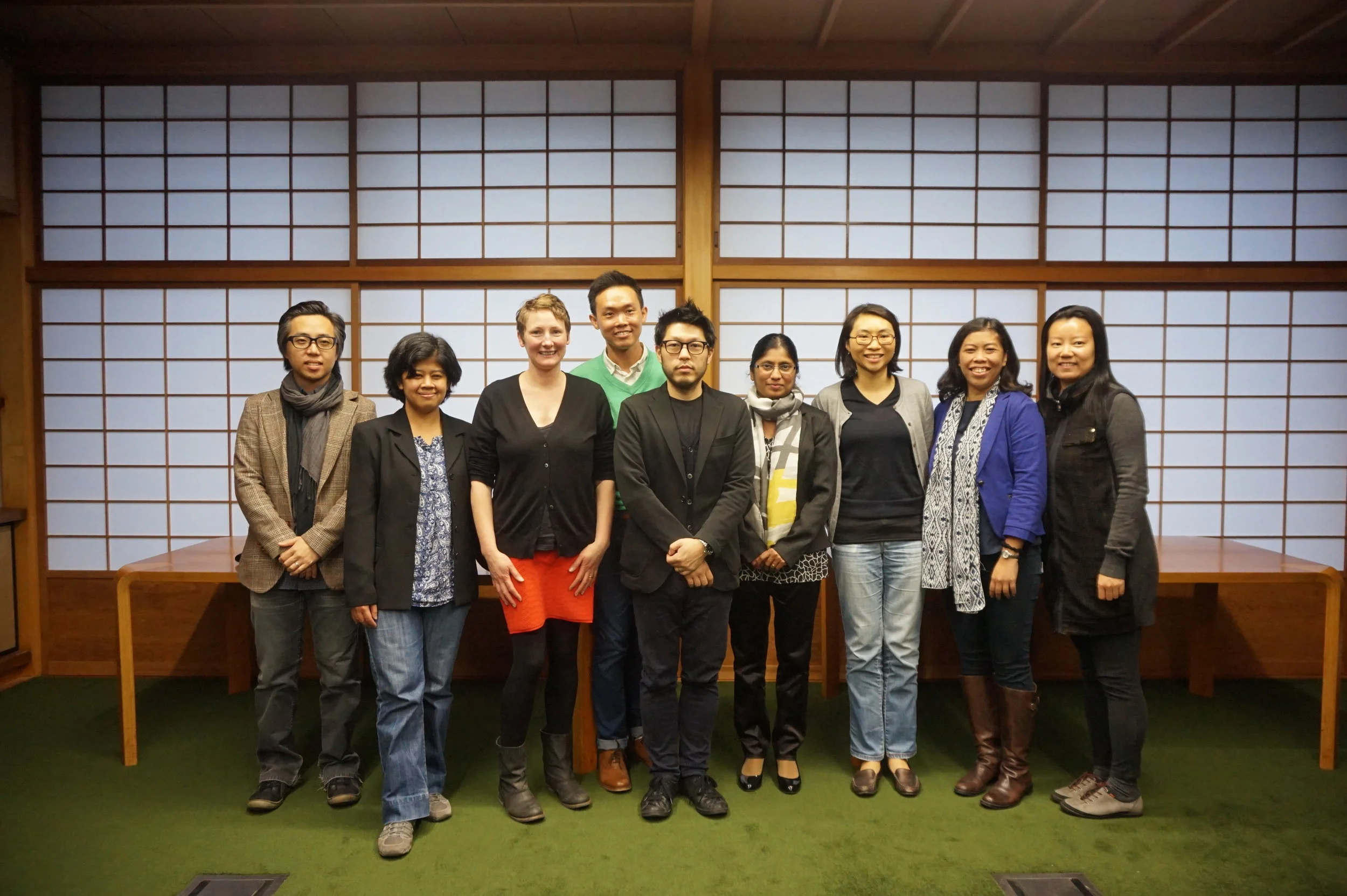
Rethinking Modern Asia-Pacific Architectures
The plenary, Rethinking Modern Asia-Pacific Architectures, funded by an International Research and Research Training Fund (IRRTF) workshop grant from the University of Melbourne, brought international collaborators and students from NUS and HKU to the Melbourne School of Design on 5-6 July 2016. The students along with others from Deakin University, the University of Adelaide, University of California, Berkeley and the University of Melbourne had the opportunity to present their respective projects to an expert audience and to network with prominent scholars of Asia. The event began with an evening function on 5 July, to meet and greet supervisors and reviewers who would attend and provide feedback to students at the plenary. The plenary ran all-day on 6 July. The format was of individual presentations followed by feedback and discussion.
The postgraduate student plenary was organised in collaboration with the Hong Kong University (HKU) and the National University of Singapore (NUS) who were partners and collaborators on an IRRTF grant awarded to Anoma Pieris. Pieris with Duanfang Lu (University of Sydney) and Cecilia Chu (University of Hong Kong) conceived the framing and direction of research with a view to combining an academic workshop and student plenary, so that students may benefit through networking with international academics. The plenary was led by John Ting of the University of Canberra, a recent PhD graduate from the University of Melbourne and ECR who coordinated the paper submission and review process. Collaborating academics included Cecilia Chu and Eunice Seng from HKU and Jiat-Hwee Chang and Lilian Chee from NUS. Organisers included David Beynon (Deakin University) and Sidh Sintusingha (University of Melbourne). The academics involved in the workshop were present at the plenary.
The plenary was organised through a protracted process including paper submissions, blind peer review and feedback to students conducted with the help of the team of organisers and supervisors. Our objective was to encourage and assist students in preparing papers, with a view to finding a venue for their publication. This process was instructive, and exposed the strengths and weaknesses of our pedagogical frameworks and research practices. Topics ranged from formal and textual interpretations of architecture through late Qing dynasty architectural discourse by Sylvia Chan, the politics of Chinese diplomatic buildings by Marta Catalan to the reconstruction of Hong Kong’s movie theatres by Keng Khoon Ng, all three from HKU. Ke Song (University of Melbourne) examined architectural modernism in late-Mao China through two projects in Guangzhou. A number of students explored architecture through indigenous subjectivities. Nirodha Dissanayake (University of Adelaide) analysed the long term reception of new towns of the Mahaweli Development Unit in Sri Lanka; Rina Priyani (UC Berkeley) explored the architectural inscriptions of ethnic identities in postcolonial Bandung, and Aninda Moezier (University of Melbourne) offered gendered readings of Minangkabau houses in Sumatra. Two of the students ventured into historically difficult spatial analyses of geopolitical sites, such as visitor perceptions of Hiroshima by Kim Roberts (Deakin University) and the Korean Demilitarised Zone by Dongsei Kim (University of Melbourne). Keng Khoon Ng from NUS offered a quite different mobilisation of border territories in a global real estate project, Forest City in Johor. The student plenary was associated with SAUH Asia’s inaugural workshop.

